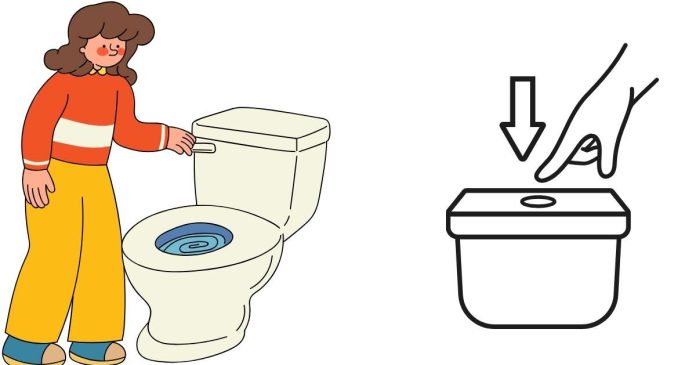If your toilet bowl is full and the water won’t go down, it likely means the toilet is clogged. Don’t worry! Here’s a step-by-step guide to unclogging the toilet safely without making a mess.
What You’ll Need:
- Plunger (preferably a flange plunger, which is specifically designed for toilets)
- Rubber gloves (to protect your hands)
- Old towels or rags (for cleanup)
- Bucket (if you need to remove some water from the bowl)
- Dish soap (optional, for a slippery solution)
- Hot water (optional, for stubborn clogs)
- Plumbing snake or auger (for tougher clogs)
Step-by-Step Guide to Unclogging a Toilet with a Full Bowl
1. Assess the Situation
- Don’t Panic! If the toilet is completely full, it’s best not to flush again, as it could cause an overflow. You need to unclog it first.
2. Protect Yourself and the Area
- Wear rubber gloves to avoid direct contact with waste.
- Use towels or rags around the base of the toilet to absorb any potential overflow or splashes.
3. Remove Excess Water (If Necessary)
- If the bowl is dangerously close to overflowing and you’re worried about a mess, carefully remove some water with a bucket. You can dip a container or cup into the toilet and pour it into a bucket to reduce the water level. Don’t remove all the water, though, as the plunger works better when it’s submerged.
4. Apply Dish Soap (Optional)
- If you suspect the clog is due to something solid and stubborn, add about a cup of dish soap into the toilet bowl. Let it sit for 10-15 minutes. This can help lubricate the clog and make it easier to dislodge.
5. Use the Plunger
- Position the plunger: Place the plunger into the toilet bowl, making sure the flange (the rubber part) is inside the hole of the drain. You want a good seal.
- Start Plunging: Begin pushing and pulling with even pressure. You don’t want to just push down hard; instead, focus on a full motion of both pushing down and pulling up. The idea is to create suction and pressure that can dislodge the clog. Plunge for about 15-20 seconds.
- Check the Bowl: After a few good plunges, check if the water level begins to drop. If it does, continue plunging until the water is fully gone and the clog is cleared.
6. Flush (If Successful)
- Once the water is draining properly, flush the toilet to ensure everything is flowing freely and the clog is fully cleared.
7. Use Hot Water (Optional for Tough Clogs)
- If the clog remains after plunging, try adding hot water to the toilet bowl. Heat up about 2-3 liters (half a gallon to a gallon) of water (not boiling, but as hot as your tap can handle). Pour the hot water into the bowl from waist height to create pressure. Let it sit for 10-15 minutes before attempting to plunge again.
8. Use a Toilet Auger (If Needed)
- If the toilet remains clogged, it may be time to use a plumbing snake or toilet auger. This tool is specifically designed to reach deeper clogs in the toilet drain.
- Insert the auger into the toilet drain and turn the handle to push the cable further into the drain.
- When you hit resistance, slowly work the auger back and forth to break up the clog.
- Once you feel the clog loosen, withdraw the auger, and then try flushing the toilet again.
When to Call a Plumber
If you’ve tried the above methods and the toilet is still clogged, it could be due to a serious blockage in the plumbing that requires professional attention. Some common reasons to call a plumber include:
- The toilet keeps clogging despite repeated attempts.
- There’s a persistent sewer smell or backup.
- You’ve used an auger but can’t reach the clog.
Preventing Future Clogs
- Only flush toilet paper and human waste down the toilet. Avoid flushing wipes, cotton balls, hair, or other objects.
- Consider using less toilet paper in one flush to avoid overloading the system.
By following these steps, you should be able to clear the clog without much hassle.


